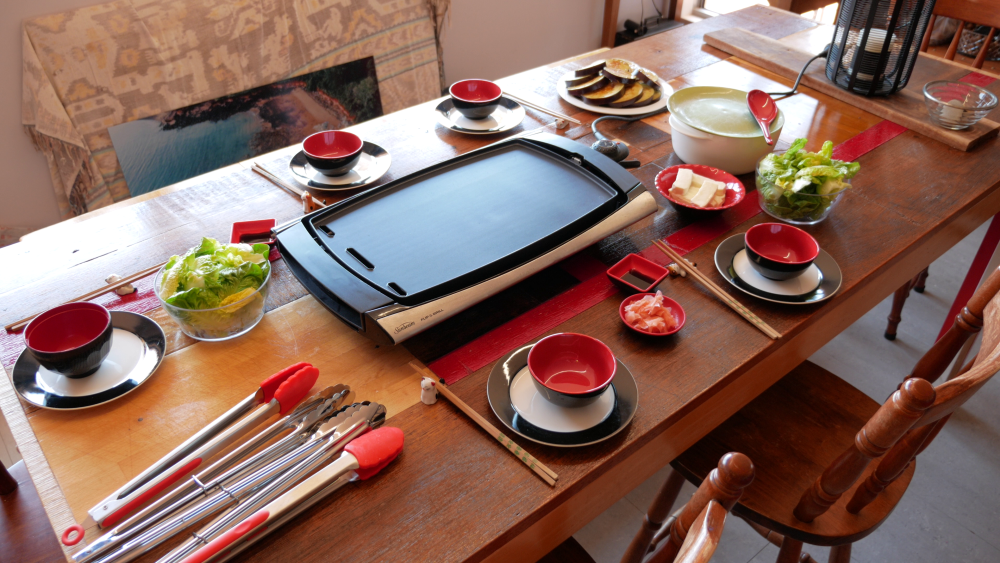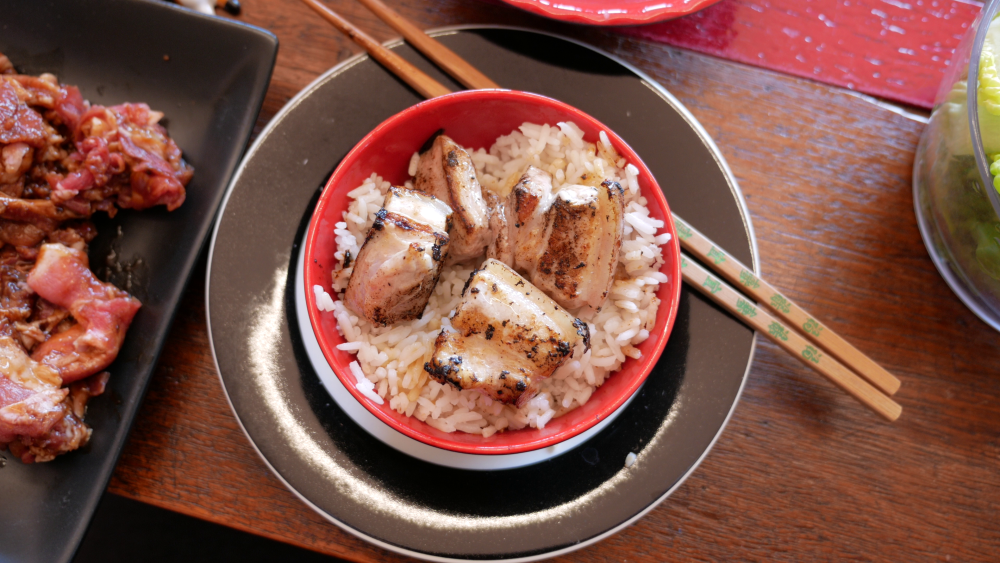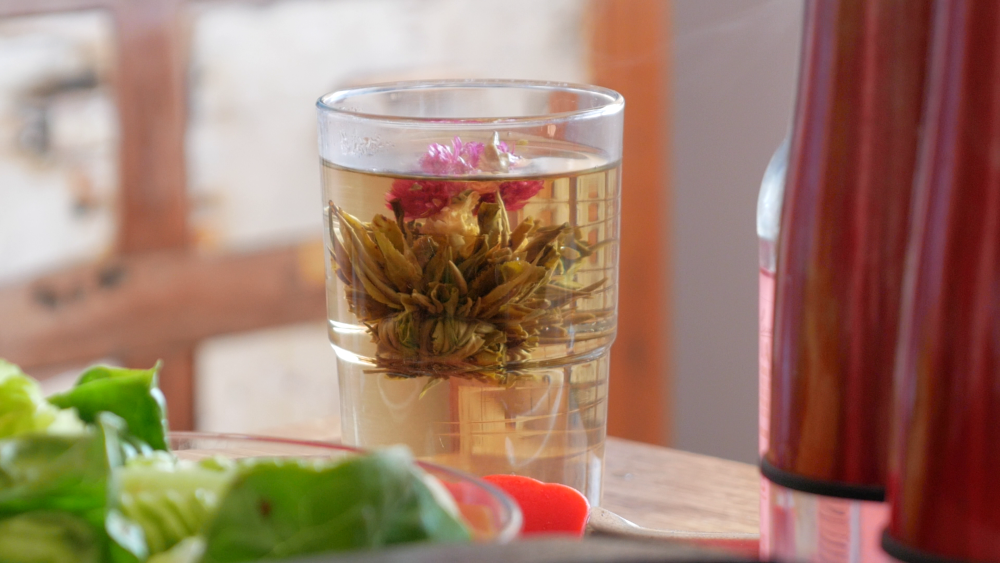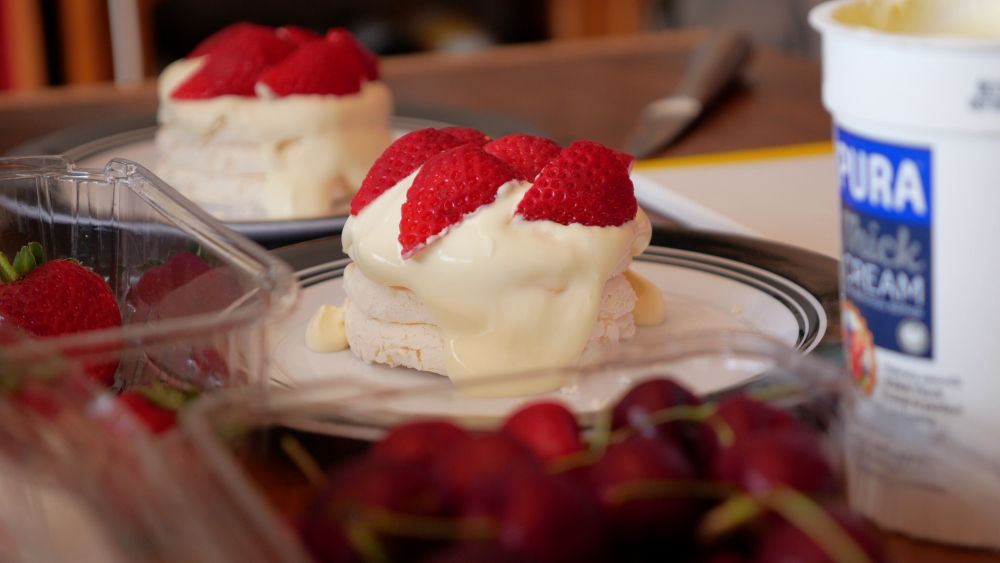Leaderboard
Popular Content
Showing content with the highest reputation on 12/23/2023 in all areas
-

World's smallest DSLM that shoots 4k?
solovetski and 2 others reacted to kye for a topic
Today we had an early xmas lunch (to avoid the conflicting invitations on the 25th) and I shot it with the GX85 and 12-35mm F2.8. Shooting was really fast and not under ideal conditions (massive window which is often backlighting people) but it did a great job. Here are a few random stills, SOOC - zero editing. Standard colour profile, with -5 Contrast / Sharpening / NR and 0 Saturation. People often lower saturation in-camera but I push my grades to have lots of saturation so I prefer to have the camera do the 8-bit conversion and compression on stronger saturated colours so that I'm not boosting up a weak colour signal in-post. When I grade it I'll be softening it up, fine-tuning the colours and adding some colour grading secret-sauce but for a someone shooting a family gathering with an 8-bit camera while also being part of the festivities, the images really speak for themselves.3 points -

Getting things right in camera
Tim Sewell and 2 others reacted to Ty Harper for a topic
I think the idea of nailing it in-camera is in and of itself not that big of a deal nowadays - if you have a basic color workflow and most importantly, know how to really nail the story you're trying to tell. That statement isn't meant to dismiss the importance of nailing it in-camera - but to say that imo nailing it in-camera has always been less about hitting a fixed target dead on - and more about a ballpark. And that ballpark is so much easier to hit thanks to the aggregated knowledge base of spaces like this, and of course YouTube. To the point where asking someone with experience for assistance is usually not as prudent as simply typing the question in YouTube's search engine! But that ball park around the target of perfection is also much wider than ever before, thanks to the corrective tools we now have within Resolve, Premiere Pro, Finalcut, etc. Not to mention basic in-the -field tools like a color chart and/or Sekonic C-700 or C-800. I was a deejay for most of my life, and I still pride myself on knowing the basic theories of bar-counting and melody-matching and taking the time to know the unique bar construction of every single song I was gna play, so that when I hit the party and got on the 1200s, my 'in-camera' settings were pretty good. But then Serato came along with other recent mind-blowing advances - and now in 2023, a deejay simply does not need to have/understand those 'in-camera' settings. Is it something deejays like myself lament? 100%!!! But the REAL deejays of those past generations also understand that the actual mission, first and foremost, was always: to tell a great story. So while there are deejays I know and admire, who still love to do 'all-vinyl' parties as a way to exercise/show-off the skills they HAD TO developed in the past, as a means to the ends of telling great stories, again, the REAL ones within that cohort also understand they are doing those parties for the sake of nostalgia, which is also very important and life affirming. All that to say, hopefully when we are in passionate pursuit of getting it right in-camera (as I am myself, to a degree) we aren't losing sight of the more important plot of getting the story right in our minds - which is a whole other skill that still demands that we strive to master it at the highest of levels.3 points -
Getting things right in camera
Ty Harper and 2 others reacted to BenEricson for a topic
Years ago, I used to work on these Walmart commercials. They were all shot on the Canon 5DMk3 set to Auto WB. Every market all over the country shot on the same camera, lens, and settings so the commercial spots would always look the same. It also sped up post product. EOS Standard I think? Or whatever was available on that camera. It's been a while. You will get the most accurate skin tones if you do a proper manual WB off of white. I sometimes use auto WB to read the scene, then lock my WB to whatever it tells me is correct. For studio stuff, I really like to shoot with baked in color, typically EOS Standard. I will often tweak the color matrix based on the setting but that profile on the Canon Cinema cameras is really really nice in my opinion. It gives you a very honest reading of the scene. Really nice for lighting fill ratios on set etc. Shooting with baked in color doesn't mean you can't grade or tweak the image. You can still shoot plates to control a blown out window away from the subject, etc. You can also add vignettes or tweak colors. I just find this to incredibly accurate and better than most people can do without a proper color workflow.3 points -
Getting things right in camera
John Matthews and one other reacted to PannySVHS for a topic
Coolest thing is a well lit set making many cameras look good. Some ooc looks are still lackluster. I found the G6 had to be graded, no matter what. But what 709 beauty it revealed. It was only after some grading tricks that I built into a powergrade and later into my first own worthwhile lut creation. We should or could do an 8bit ooc challenge. But noone has been liking a challenge for years now:(2 points -
Getting things right in camera
Ty Harper and one other reacted to Jedi Master for a topic
I use a Sekonic C-500 color meter. It reads directly in degrees Kelvin.2 points -
Getting things right in camera
FHDcrew reacted to Clark Nikolai for a topic
I can dig both approaches. Some things having manual everything on a camera allows you to get the shot looking really nicely. (If the camera responds to that and gives a great image because of it.) It takes more time though and just won't be fast enough to record certain events. Other cameras that are automatic, have image stabilization, auto everything are great for events where you don't have control and just have to record stuff. It gives a different look but that's still appreciated footage. We live in a golden age of so many very good cameras that for a relatively low cost we can shoot something. (It does also mean more people are shooting and producing so there's more competition at festivals, etc. ) The choice people have now is no longer whatever they can get their hands on or can budget for but what look they want or what type of situation they're going to be shooting in.1 point -
GF3, no way I will be buying that thing:) But you made it shine. @kye Got my LX15 with me for Christmas. It gives the GX85 a good run for the money. The LX15 has been doing great things for me, way above its weightclass. But in two situations it was not performing to my new high expectations which had been awakened by it. Still trying to find out about the parameters which made it perform less stellar on these occasions.1 point
-
I still got my F3 waiting for prime time. Well, that would be leisure time personal filmvignettemaking.;) Meanwhile, when I am still talking, some others have been walking: some more Cinealta F3 goodness and some tasty 80ies style color palette and visual vibe. Wanna do an 8bit F3 filmvignette? I would finally have a fun reason to use mine. @IronFilm1 point
-
I wouldnt highten one skill on the expense of another. I wouldn´t label a certain skill set as nostalgic just because off the point in time it was working wonders. But then you know about your art and skills of DJing and can put it into context, which both I am unable to. Getting things right in camera is not about story but about the ooc image.1 point
-
Sure. Perhaps the important part that I didn't mention is that I often miss moments because I was a second or three late to get the camera pointed in the right direction and rolling, so to say I don't have time to do a manual WB before hitting record would be an understatement because often I have a negative amount of time I can devote to such things! Doing what you can to get it right in-camera is definitely preferable, but in how I shoot, getting it into the camera at all is something that is by no means guaranteed. Of course, I am in a very tiny minority of all the people who shoot and know how to change the WB in post, but while my process doesn't apply to the majority of shooters, I still think there can be things learned by sharing 🙂1 point
-
World's smallest DSLM that shoots 4k?
John Matthews reacted to PannySVHS for a topic
100 mbit sounds perfect for what it is. Might be the GH4 sensor, readout and additional crop. Not bad. Kinda thrilled by that little cube. No gas in 2024, even moreso no corny gas. Sorry for the depreciative wording. Just sounds too cool to resist. 😂 I love the fact that you put this little oddity to use and put it on the table. Fascinating nerd gem from the recent past. Perfect camera to observe on this lovely forum imho. So big thanks to you! @homestar_kevin1 point -

World's smallest DSLM that shoots 4k?
John Matthews reacted to homestar_kevin for a topic
It's definitely a super brittle codec/bit rate combo. There is little to no leeway with the files. There is a hack to bump the bitrate to 100 mbps but I have never done that. The good things about the light codec is a 256 microSD card will record for hours and hours. The LCD is a whopping 320 x 240 rear screen. Not entirely useless, but a good way there. The thing that's really helpful is it connects to your mobile phone with an app like a gopro would that allows you to monitor remotely, change settings and modes, as well as trigger recording.1 point -
Awful in my line of work as any change/changes mid scene is near impossible to overcome in post. Just a headache. But otherwise yes, fixed WB of ‘5500’ works nicely and is my go to (not 5600) as it’s the recommendation for the conversion LUT I use. I also meant 4500 indoors not 4000, so 4500 and 5500 are my two programmed default options.1 point
-
https://www.cined.com/camera-foundry-cineback-for-sony-fx3-and-fx30-launched/ We're making cameras smaller, just to make them bigger again.1 point
-

24p is outdated
Rinad Amir reacted to kye for a topic
He does. I applaud Markus for the work he does and the passion that he brings, trying to beat back the horde of Youtube-Bros who promote camera worship and the followers who segue this into the idea of camera specs above all else. But there's a progression that occurs: At first, people see great work and the cool tools and assume that the tools make the great work - TOOLS ARE EVERYTHING Then, people get some good tools and the work doesn't magically get better. They are disillusioned - TOOLS DON'T MATTER Then they develop their skills, hone their craft, and gradually understand that both matter, and that the picture is a nuanced one. TOOLS DON'T MATTER (BUT STILL DO) This is the same for specs - they are everything, they are nothing, then they matter a bit but aren't everything. By the time you get to the third phase, you start to see a few things: Some things matter a LOT, but only in some situations, and don't matter at all in others Some things matter a bit, in most situations Some things matter a lot to some people, but less to others, depending on their taste Film-making is an enormously subtle art. Try replicating a particular look from a specific film/show/scene and you'll find that getting the major things right will get you part of the way, but to close the gap you will need to work on dozens of things, hundreds maybe. The purpose of any finished work is to communicate something to the audience. For this, the aesthetic always matters. Even if the content is purely to communicate information, if you shoot a college-looking-bro delivering the lines sitting on a couch drinking a brew filmed with a phone from someone lying on the floor, well, it's not going to seem like reliable or trustworthy information, unless it's about how many beers were had at the party last night (and even then...). The same exact words delivered by someone in a suit sitting at a desk with a longer lens on a tripod and nice lighting will usually elicit a very different response (sometimes one of trust, and sometimes a reaction of mis-trust, but different all the same). A person wearing glasses and a lab coat standing in front of science-ish stuff in a lab is also different. Humans are emotional animals, and we feel first and think second. There isn't any form of video content that isn't impacted by the aesthetic choices made in the production of the video. Some might be so small that they don't seem relevant, but they'll still be there in the mix.1 point -

24p is outdated
Rinad Amir reacted to fuzzynormal for a topic
Art is conceit. Cinema is a altered from reality by default. Because of that, it's perfectly fine when some filmmakers decide for it to absolutely fail to be accurate in certain ways. Flaws are beautiful. They invoke an alternate reality. Some filmmakers like 48 or 60fps. So be it. I like 24fps and a 360 degree shutter. My preferences ain't wrong, they're simply mine.1 point






